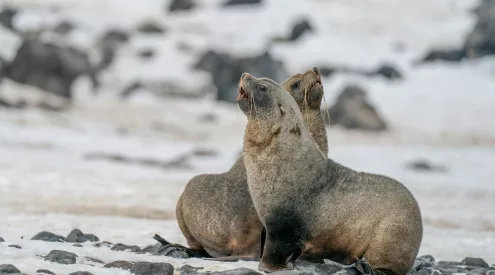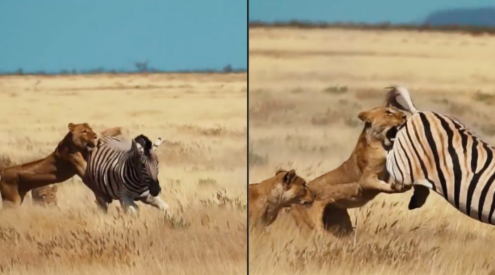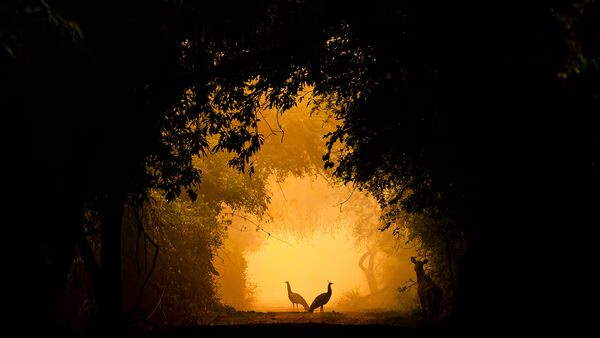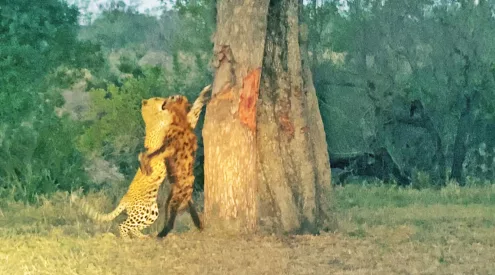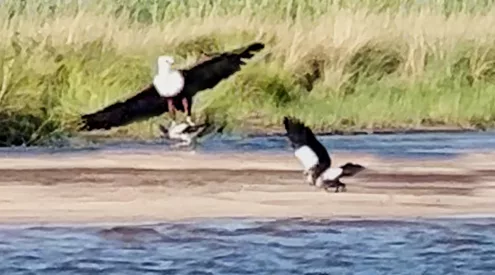As lilacs and pinks flood the early morning sky, a little cub gently licks the sparkling dew off a delicate grass blade. Nearby, her brother, half-sisters, aunts, mother and father are settling in to watch the sun rise over the Ngamo lion release site in central Zimbabwe. After a sleepy night safely hidden in the den whilst the adults searched for prey through the darkness, our little cub stretches and steps out into the light.
When left alone in the den, she and her siblings instinctively understand the protection provided by mum, dad and the pride has gone; all are on their best behaviour so as not to attract any unwanted attention from predators. Although there are no other large carnivores, elephants or buffalo in Ngamo, the large resident snakes and frequent eagles pose a formidable threat to the young cubs when exposed and alone.
When the adults return, dropping the safety net over their cubs, playtime can commence.
The now golden morning rays descend upon the pride, and the cubs of the Ngamo crèche come to life with a bang. Mock battles rage as tails are pulled and paws are bitten – it’s every cub for themselves. Play bouts amongst the youngsters may appear as mere fun, but these interactions are crucial for their development. So what sort of play will this young female cub engage in today? Perhaps some social play with her brother in the morning, followed by a lunch time of object play with a mean looking bush, a quick spot of predatory play upon some unsuspecting guinea fowl and to finish the day off, some locomotory play by running as fast as she can through the bush to beat everyone else!
Research of wild prides has shown that lion cubs engage in and exhibit social play more often than any other play type. This type, often the most conspicuous, helps cubs form and maintain social bonds vital for adulthood within a pride. Other young felids, such as cheetah cubs, engage in locomotory play far more often than social play as a means of improving neuromuscular development and to aid flight response. Cheetah cubs are often at an even higher risk of predation than lion cubs, often from lions; therefore it is vital their cubs are able to flee quickly enough from a young age. Yet the kings of the jungle can afford to mess around socially with one another, within the safety of the pride, as no one messes with mum and dad!
After a tiring day of play, and finally waking up the adults, its time for a thorough bath and a good feed. Our little cub flops down upon her mothers fore paws and grasps her face to greet her. Mother begins to lick her cub from head to tail removing any ticks and dirt picked up during the day and cementing further the bond between mother and daughter.
Once fresh and clean the Ngamo cub expresses her hunger with ear piercing cries and eventually convinces mum to roll over so she can have dinner. The cub fights for her place to tuck into a fantastically healthy meal of mother’s milk bursting from her teats, sustained after her own huge zebra meal from the day before.
Once contentedly full, the Ngamo cub snuggles into her mothers chest, licking her lips and paws before slowly drifting off into a deep catnap.
For more about the Ngamo release pride visit their page and learn why these cubs are so important.
Images courtesy of Rae Kokes, Ngamo researcher





